15 May 2024
Researchers put the spotlight on Engineering at the Old Fire Station
As part of the Department’s public engagement with research programme, six early career researchers gave Ted-x style talks to a fascinated audience at the Spotlight Engineering event in Oxford last month
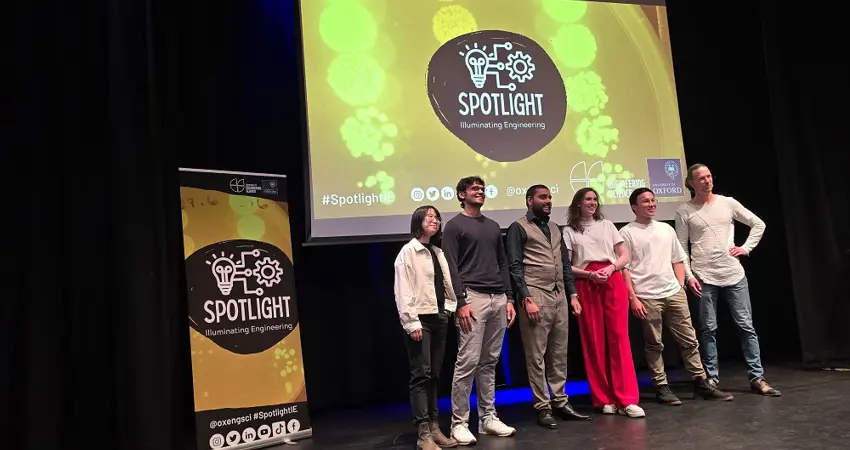
The Old Fire Station in Oxford was sold out for an evening of illuminating talks by Oxford engineering researchers last month, as they revealed the latest advances in using gases to reduce infection, training machines to learn like humans, using engineering to treat back pain, and how foldable origami structures could redefine space exploration.
As well as expanding public understanding of how engineering innovations could impact on their daily lives and inspiring a future generation of potential engineers, the aim of the talks is to help researchers develop useful and transferable skills in public speaking, storytelling and presenting information to a non-scientific audience.
“I really liked having to speak about my research with people who aren't from my background. It is something important to be able to break down complex topics into digestible segments for people from unrelated backgrounds and this was something that I really enjoyed.”
Shreyank Narayana Gowda, postdoctoral researcher in AI for Healthcare
Professor Stephen Roberts, outgoing Chair of the Department’s Researcher Committee, says, “Giving public talks offers such a valuable training for researchers. Not only do members of the public get to hear about amazing research, but presenting complex information to a non-specialist audience helps hone a researcher's communication skills and can lead to a deeper understanding of their own research.”
On the night, Postdoctoral Research Associate Veerle Brans shared the story of how she was inspired to study biomedical engineering after seeing her mother suffer chronic back pain throughout her life. Her innovative research is devising new ways to treat back pain by injecting a liquid into the gaps in the backbone caused by wear and tear, and using ultrasound to transform the liquid into a gel which acts as a cushion. She says, “I was already pretty comfortable presenting my research / being on stage and have done outreach talks before. It was great to have feedback on how to make it more relatable and understandable and most of all, I just had a lot of fun with the training and practises, it allowed me to do something I love!”.
"It was great to have feedback on how to make it more relatable and understandable and most of all, I just had a lot of fun with the training and practises, it allowed me to do something I love!”
Postdoctoral Research Associate Veerle Brans
DPhil student Christopher Campbell also works in biomedical engineering. His research is investigating how gases can be used to treat leg infections that are common to diabetes sufferers. Often the infections are resistant to topical treatments as the bacteria join together to form a protective ‘biofilm’, a thin, resistant layer of microorganisms. Adding Nitric Oxide (NO) to a biofilm triggers the bacteria clumps to separate and disperse, making the infections easier to treat and more easily removed. Christopher is developing ways of delivering NO to the wounds by engineering liquid droplets that slow the release of the gas.
Postdoctoral Researcher Jingyi Yang took the audience’s imagination into space, asking them to consider how paper folding could inspire designs for solar panels on satellites or reflective array antennas. Using the principles of the ancient art of origami, Jingyi is developing simple folding mechanisms that can be easily and precisely deployed (unfolded).
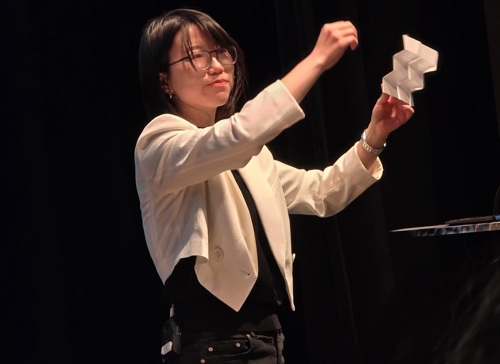
Senior Postdoctoral Neuroengineer Joram van Rheede, Postdoctoral Research Assistant Pranav Thoutam and Postdoctoral Researcher Shreyank N. Gowda also talked about research into how sleep affects brain implants, how oceans can absorb carbon emissions, and training machines to think like humans, respectively.
"Public talks like this spark unexpected questions and discussions, as well as highlight new perspectives and potential new avenues for research."
Professor Stephen Roberts
All of the audience members felt they had learnt something new on the night, and 90% said they had a different view of what engineering is than they had before, with almost the whole room saying they thought engineering would have an impact on their lives in the future, compared to only 50% at the beginning of the evening.
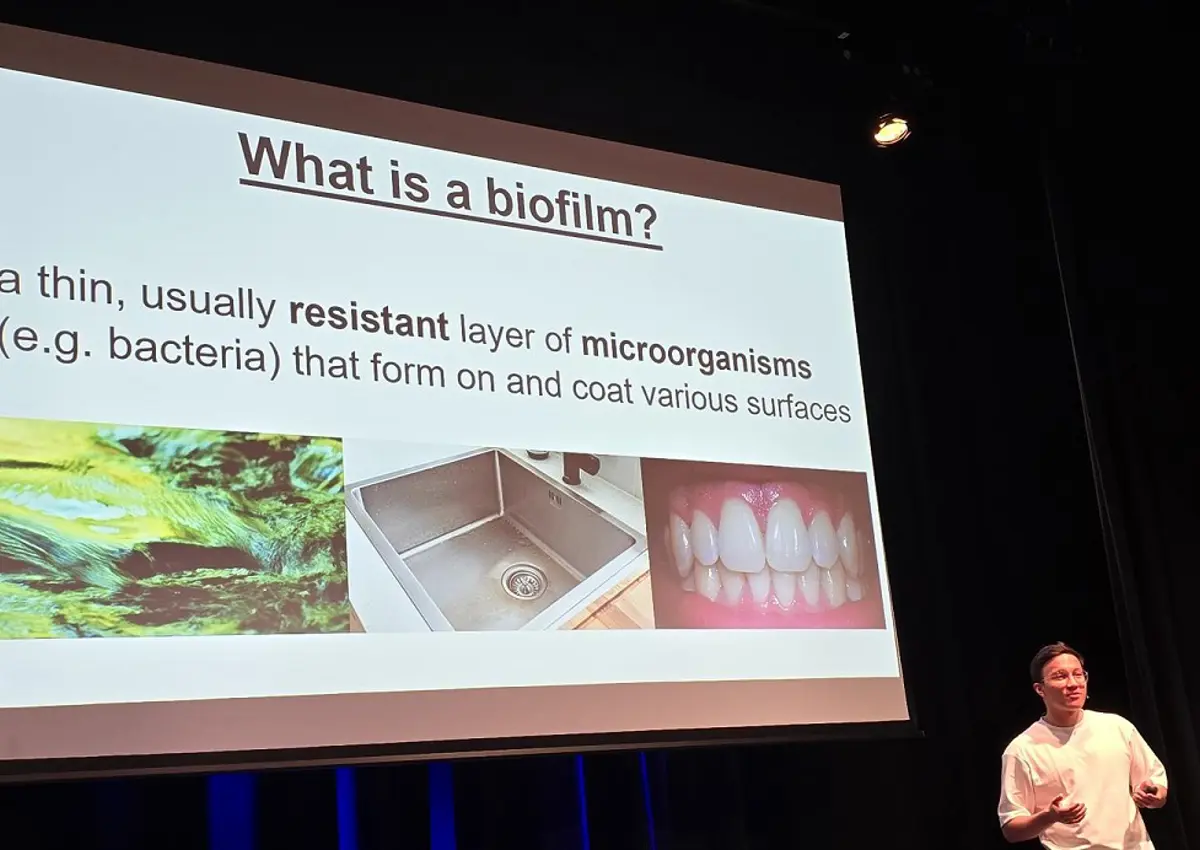
Christopher Campbell: Can a gas be used to reduce infection?
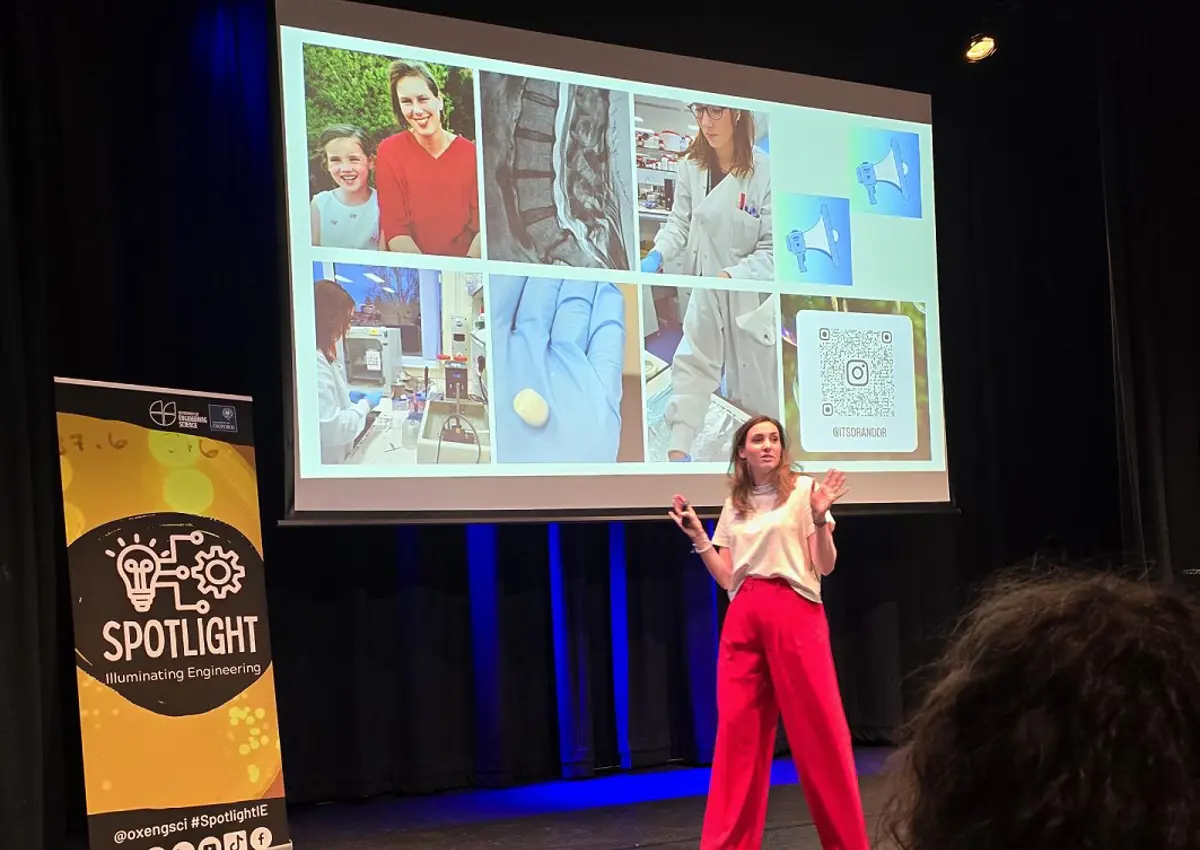
Veerle Brans: How can engineering help treat back pain?
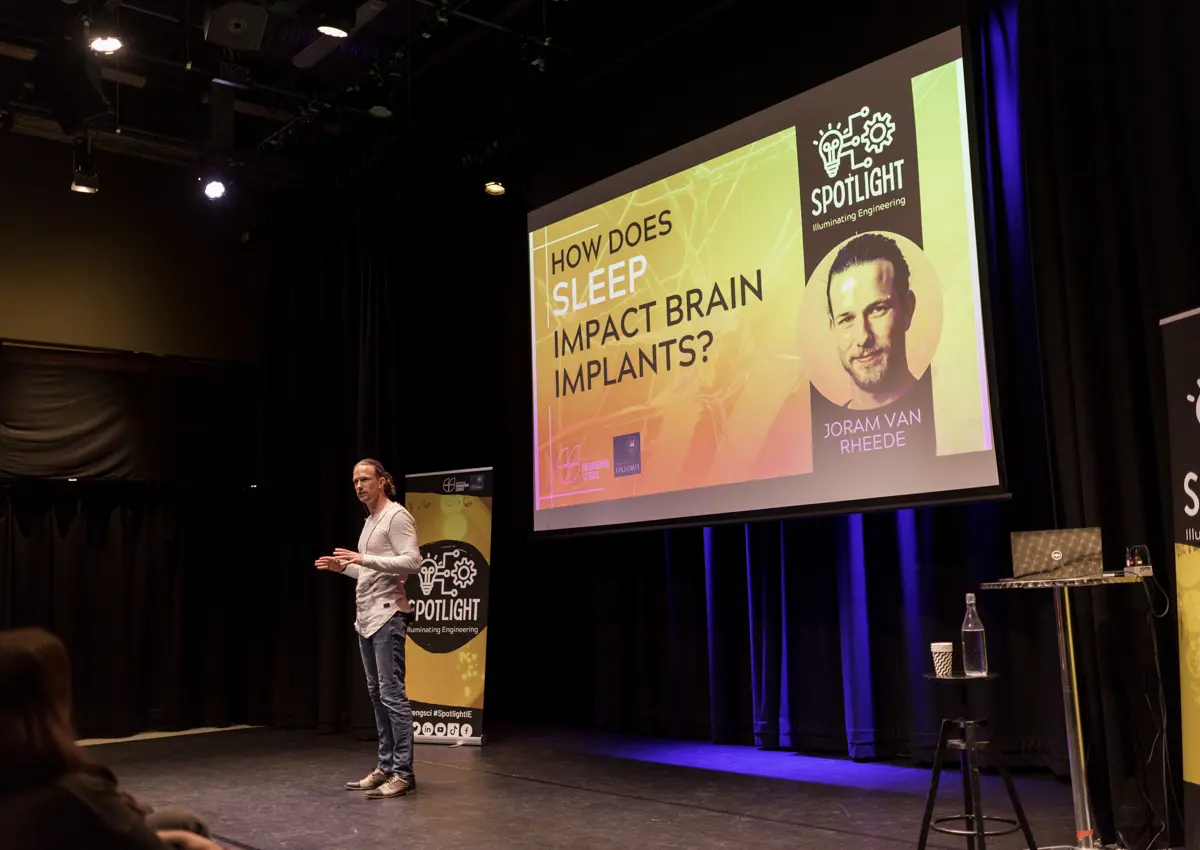
Joram van Rheede: How does sleep impact brain implants?
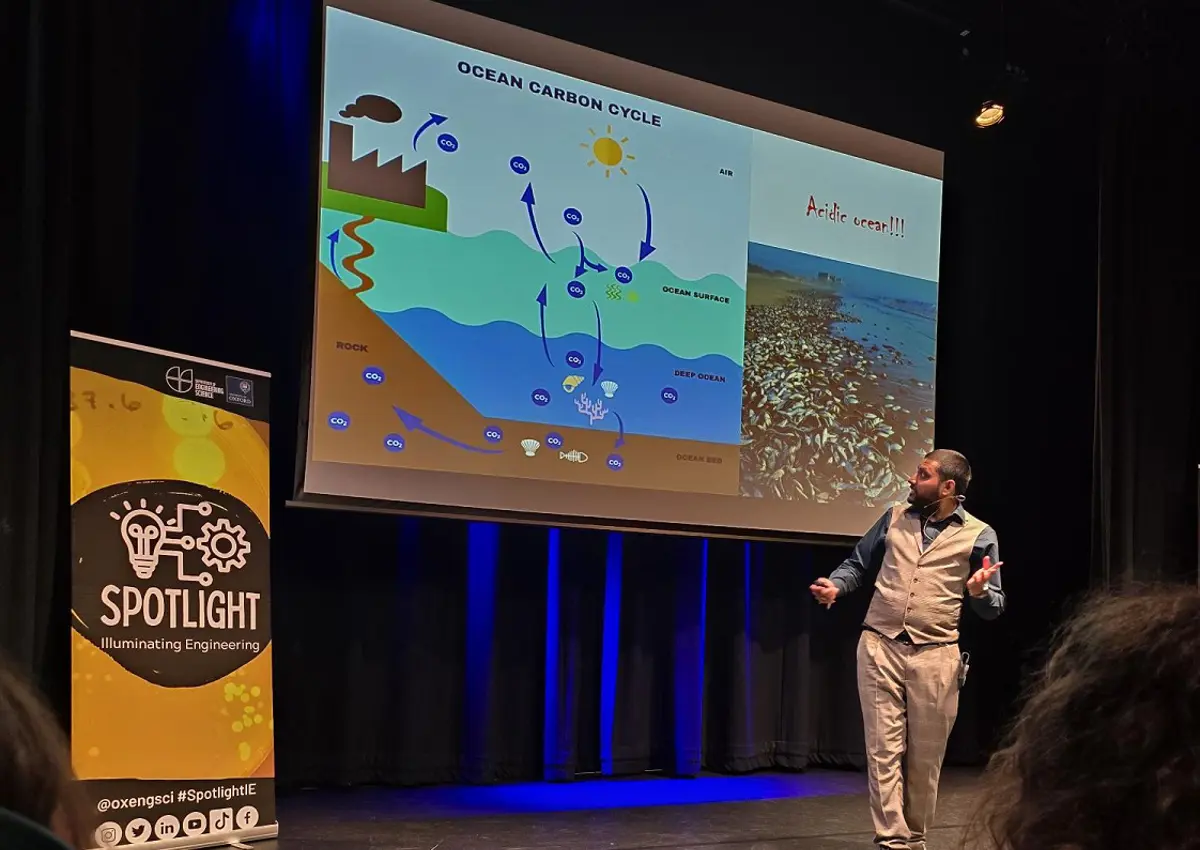
Pranav Thoutam: How can oceans absorb carbon emissions?
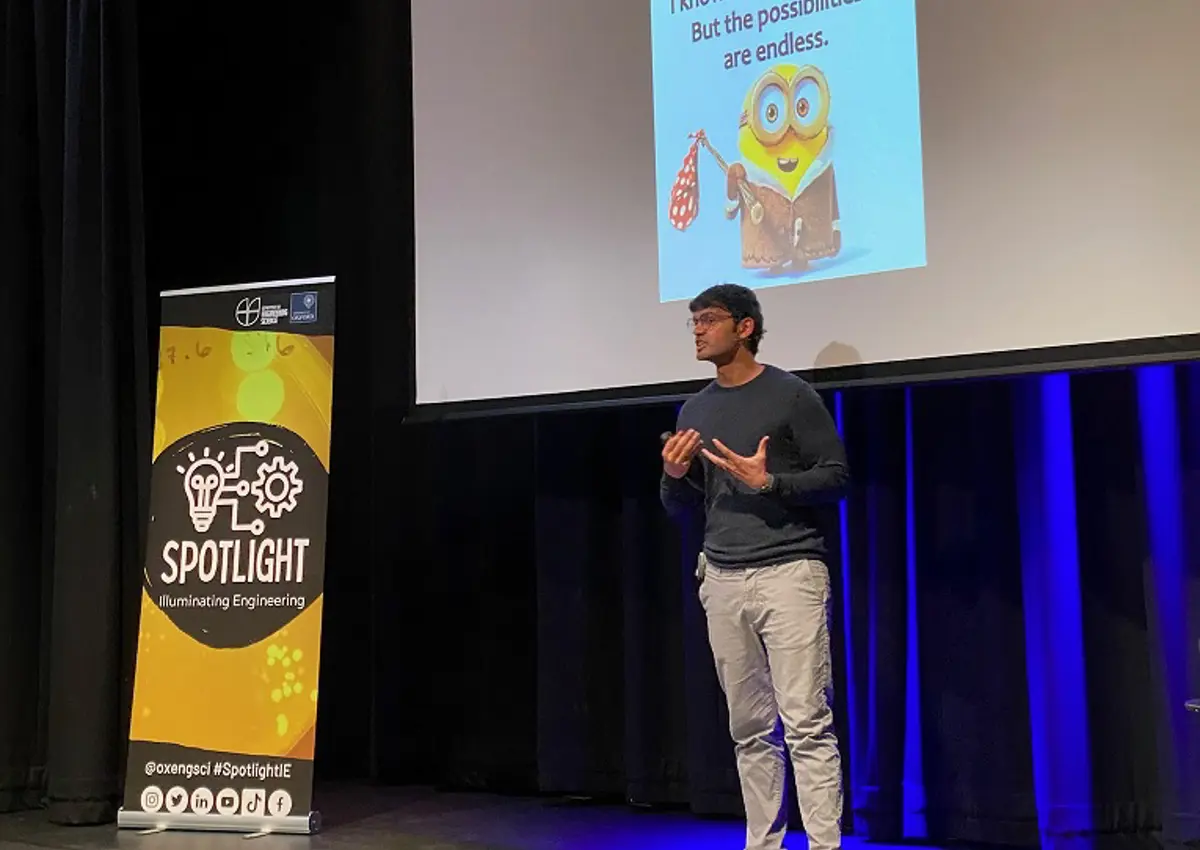
Shreyank Narayana Gowda: Could we train machines to learn like humans?




